In the 5,000 years of recorded history, a lot has been said about mushrooms. The ancient Greeks and Romans waxed poetic about many species, although in some cases more highly touted for their properties as a poison than for their comestible value. Charlemagne reportedly ate them with every meal. Wars have been fought over them. Mythical properties have been ascribed to them. Spells may be cast with them. Of course, you can also just sauté them in butter and serve them over polenta.
Earthly Delights
Mushrooms are the most primitive of foods, related to molds and yeasts, and most species are found only in symbiotic relationships with the roots of trees. Today, some morels and porcini fetch as much as a thousand dollars a pound in Japan while the same product grows abundantly wild in the upper Midwest. Go figure.
Americans have only recently discovered the decadent pleasures of wild mushrooms. Advances in cultivation methods have taken what were once exotic rarities found only in remote woodlands and put them directly in your supermarket shopping cart.
Some of the most popular types of mushrooms are morels – scarce and sublime; porcini (called cepes in France) – nutty and unctuous; chanterelles – redolent of apricots and best cooked only in hot butter; oysters mushrooms – an elegant fan-shaped fungus that cooks quickly and tastes ethereal; shiitake – meaty and firm, with a flavor that actually improves with drying; cremini, which when fully matured are called portobellos. And then there are matsutaki and enoki, favored in Japan for their earthy texture, and trumpet, puffball, hedgehog, lobster and hen of the woods – also well loved but not easily accessed. (Learn more about wild mushrooms here.)
As a foodstuff they are something of a miracle. They have neither roots nor leaves and cannot photosynthesize sugars. They exist on the putrefying remains of other organisms. By the numbers, there are over 40,000 species of mushrooms around the world but only 1,800 are recognized as digestible.
As an edible, they are rich and meaty. They stand on their own with dignity and intensify the flavors of whatever they are partnered with. This is in part because they possess an abnormal amount of glutamic acid (the natural version of MSG).
Mushrooms’ intense flavor offers special benefits for those of us eating with our health in mind. High natural flavonoid content means we don’t have to introduce a lot of fats into mushroom recipes in a vainglorious attempt to coax more flavor out of them.
Sadly, mushrooms expire very quickly after harvest. They should be utilized quickly as they are prone to spoilage. Fortunately, this rarely proves difficult because they can be cooked in virtually any way imaginable. They can be dried, roasted, grilled, sautéd, fried, pickled, braised, broiled and stewed. They can also be eaten raw. You might slice some creminis paper thin, dress with lemon juice, olive oil and fresh thyme. Then serve over shaved fennel, garnish with parmesan curls, add a drizzle of truffle oil, and you’ve created one of my favorite salads.
Twice Cooked Mushrooms, Never Shy
When it comes right down to it, my favorite way to prepare mushrooms is what I call the “twice-cooked method.” This technique coaxes every drop of flavor out of the mushrooms and is easily the sexiest of styles.
Preparing twice-cooked mushrooms is simple. Sauté at a high heat first (in a little olive oil and/or butter), then add liquids (such as vegetable stock) and braise. This technique combines the best elements of dry-heat and moist-heat cooking. The dry-heat method changes the texture of the mushrooms as they sauté in the pan, caramelizing their sugars as the mushrooms sear and eventually brown. Then the added braising liquids dissolve the pectins and cellulose, thereby softening the cell walls of the mushrooms. The mushrooms cook thoroughly and the braising creates a flavor exchange, allowing the juices of the mushrooms to meld with the added liquids and make a more flavorful reduction.
The caramelized surfaces of the first stage of cooking dissolve in this reaction, providing a layer of flavor that is reminiscent of toffee. You can’t get this result by simply braising or sautéing alone; it’s the combination of the two that produces the magic. The concentration of caramelized proteins only occurs with dry-heat techniques and the flavor exchange only happens with moist-heat cooking. Just as importantly, this technique allows you to use as little fat as possible to begin the caramelizing process.
With mushrooms, as with all other foodstuffs, my advice is to buy the best products you can get your hands on. Work with honest ingredients, use authentic methods, and then get out of the way. And don’t be afraid to experiment. I frequently learn more from my mistakes than I ever do from the successes I stumble into.
Which reminds me – should you stumble across some delectable-looking wild mushrooms in the forest, don’t eat them unless you are absolutely certain of their identity (and edibility). As delicious as wild mushrooms are, some are deadly poisonous. And we do want you to stick around for the next course.
Healthy Helping
Mushrooms are more nutritious than most people believe. They have a good deal of protein, deliver plenty of essential minerals and large amounts of B-complex. They also contain many medicinal substances, mostly in the category of cancer fighting antioxidants.
Twice-Cooked Mushrooms
This recipe makes three to four cups of mushrooms. It will serve three to six people depending on its application. A perfect foil for a grilled piece of beef or chicken, it also works wonderfully over pasta or polenta, or with grilled-rare sashimi-quality tuna steaks. Try it as a base for an earthy autumnal soup, as a sauce, or layered into a vegetable lasagna.
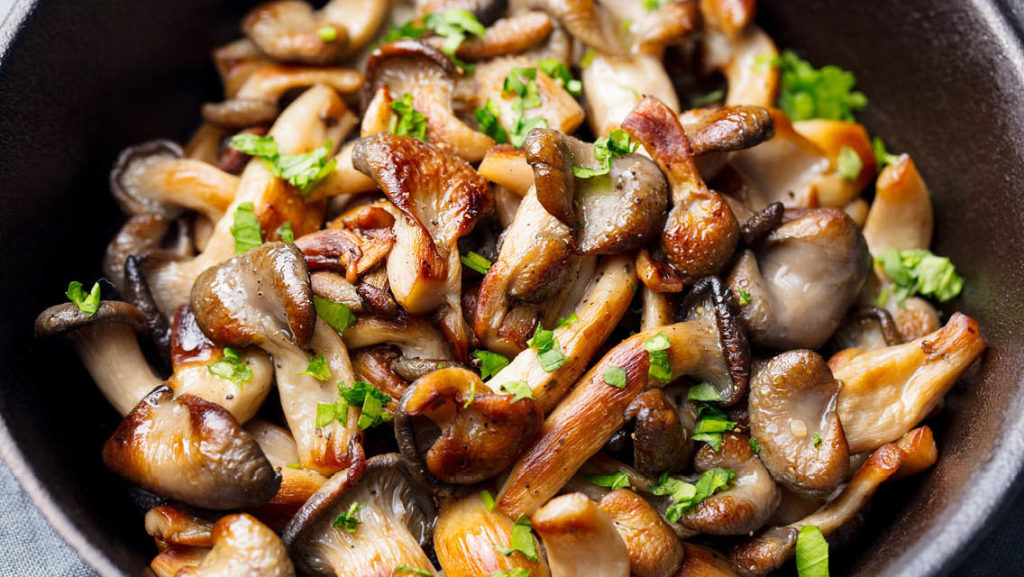
Ingredients
- 2 lbs. of sturdy mixed wild or cultivated mushrooms, wiped clean of detritus with a damp rag
- 1/2 cup red wine
- 1/2 cup sherry
- 2 cups veal or chicken stock
- 1/2 cup chopped tomatoes in their own juices (canned is fine)
- 1 tsp. tomato paste (try the Italian variety that comes in a tube)
- 3 tbs. olive oil
- 2 tbs. sliced garlic cloves
- 1/4 cup minced shallots
- 2 tbs. fresh thyme leaves
- 1 tbs. fresh rosemary leaves
Directions
- Slice the mushrooms.
- Place the oil in a large sauté pan over high heat. When oil is very aromatic and the surface ripples, add the mushrooms.
- Sauté until caramelized. Add garlic, shallots, herbs and tomato paste.
- Sauté to glaze the shallots and add the chopped tomatoes and juices. Toss briefly and add the wine and sherry. Reduce liquids by half and add the stock.
- Simmer until sauce adequately naps the back of a spoon.
- Season with salt and pepper, and perhaps a drizzle of truffle oil.
- Serve in, over or next to anything you like (see above for suggestions). Or simply enjoy on a toasted slice of hearty, whole-grain bread.
This article has been updated and originally appeared as “Mmm … Mushrooms!” in the March/April 2002 issue of Experience Life.
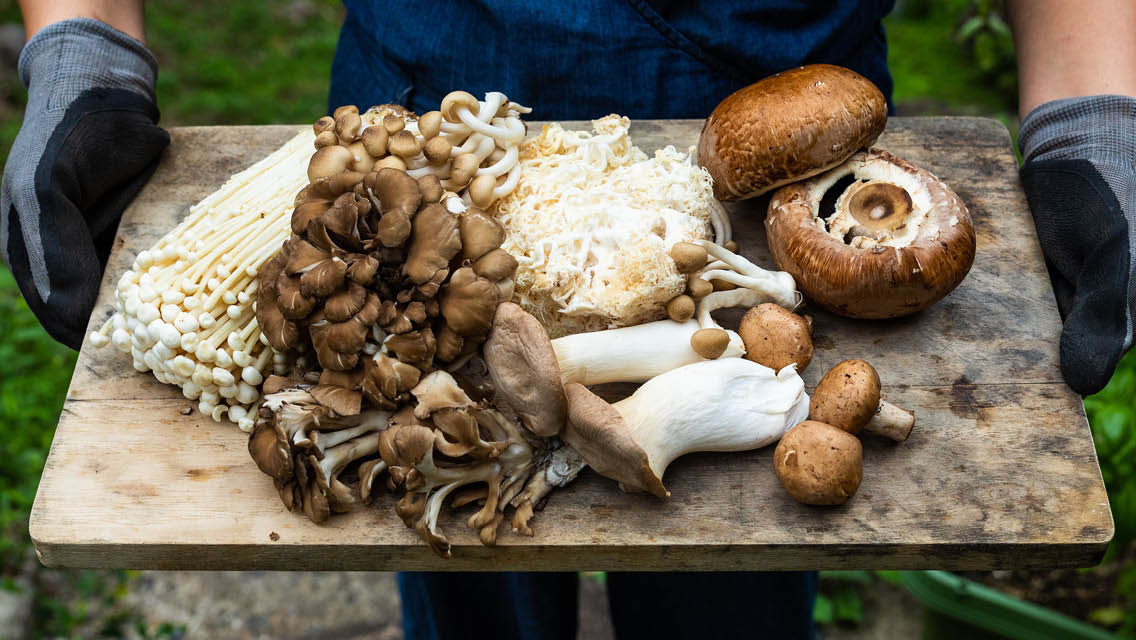

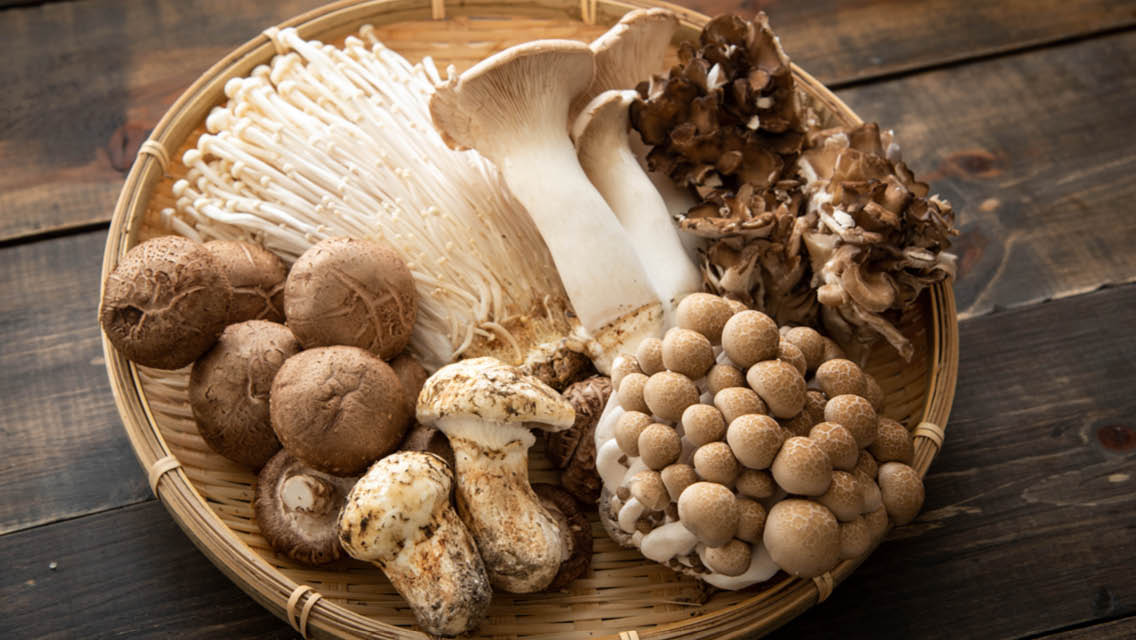
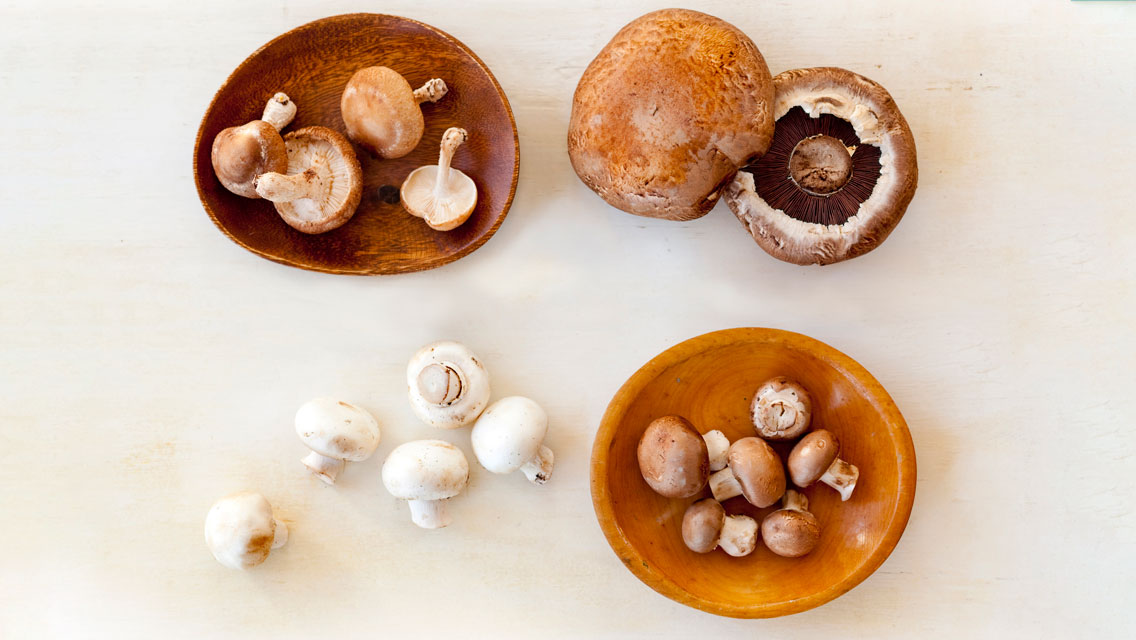
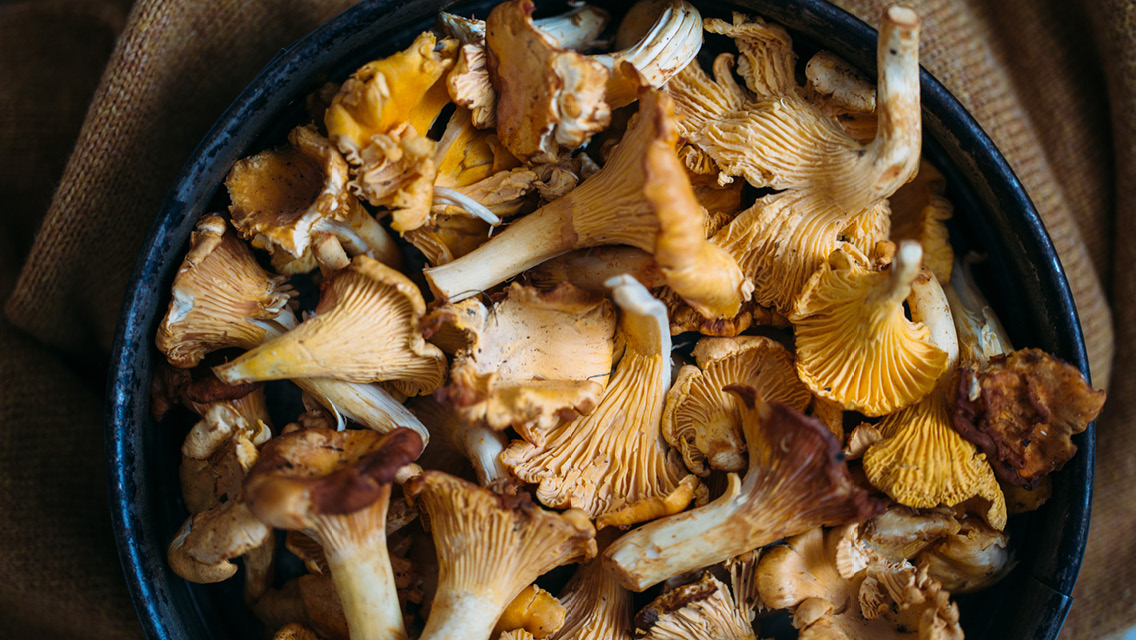
This Post Has 0 Comments